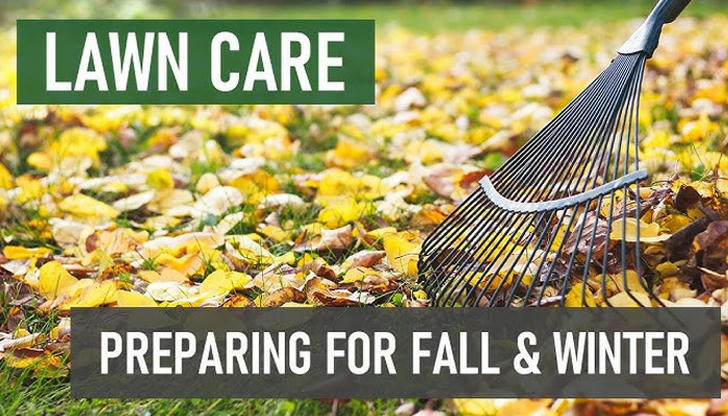Revitalizing Your Lawn: A Season-by-Season Care Guide
A lush, green lawn is more than just a patch of grass—it’s the foundation of your home’s curb appeal and a personal oasis for outdoor relaxation. But keeping your lawn healthy year-round takes more than just mowing. It requires seasonal care tailored to your climate, grass type, and soil conditions.

This comprehensive season-by-season guide will help you revitalize your lawn, maximize its growth potential, and prevent common problems like weeds, bare patches, and disease. Whether you're a first-time homeowner or a seasoned gardener, this plan will help your lawn thrive from spring through winter.
Understanding Lawn Basics
Before diving into seasonal tasks, it's helpful to understand the fundamentals of lawn care.
Grass Types
There are two main types of turfgrass:
- Cool-season grasses (e.g., Kentucky bluegrass, fescue, ryegrass): Thrive in northern climates and grow best in spring and fall.
- Warm-season grasses (e.g., Bermuda, zoysia, St. Augustine): Thrive in southern regions and grow vigorously in summer.
Knowing your grass type helps determine the best care schedule.
Soil Health
Healthy soil equals a healthy lawn. Test your soil every 2–3 years for pH, nutrient levels, and composition. Most grasses prefer a pH of 6.0–7.0.
🌱 Spring Lawn Care (March–May)
Spring is when your lawn wakes up from winter dormancy. This is the most critical time to set the tone for healthy growth all year.
1. Rake and Clean Up
Remove debris, leaves, and dead grass that accumulated over winter. Use a rake or dethatcher to loosen compacted thatch.
2. Test Soil and Fertilize
Use a soil test kit to check pH and nutrient levels. Apply a balanced fertilizer if needed, but avoid overfeeding.
- Cool-season grasses: Apply a slow-release nitrogen fertilizer.
- Warm-season grasses: Wait until late spring, when grass is actively growing.
3. Aerate (if needed)
If your lawn has poor drainage or heavy foot traffic, aerating helps break up compacted soil and improves air, water, and nutrient flow.
4. Overseed Bare Spots
Fill in thin or bald patches with the same type of grass seed. Lightly rake and water regularly to establish new growth.
5. Weed Control
Apply pre-emergent herbicide to stop weeds like crabgrass before they sprout. Follow up with spot treatment if needed.
☀️ Summer Lawn Care (June–August)
Summer brings heat, drought, and heavy lawn use—stressful conditions for your grass. Focus on maintenance and protection.
1. Water Smartly
- Water early in the morning to reduce evaporation.
- Deep watering (1" per week) encourages deep roots.
- Avoid daily shallow watering, which promotes weak roots.
2. Mow High and Often
Taller grass shades the soil and reduces water loss.
- Cool-season grasses: Mow to 3–4 inches.
- Warm-season grasses: Mow to 2–3 inches.
Keep blades sharp and follow the one-third rule: never cut more than one-third of the grass height at once.
3. Fertilize Warm-Season Grasses
This is the ideal time to feed warm-season lawns with nitrogen-rich fertilizer. Avoid fertilizing cool-season grasses during heat waves—they may go dormant.
4. Pest Monitoring
Watch for signs of lawn pests like grubs, chinch bugs, and armyworms. Use integrated pest management (IPM) or spot treatments as needed.
5. Avoid Heavy Projects
Limit seeding or aerating in summer. The heat stresses new growth. Focus instead on watering, mowing, and monitoring.

🍂 Fall Lawn Care (September–November)
Fall is the best season for serious lawn restoration. Conditions are ideal for growth, and cool-season grasses thrive.
1. Rake and Remove Leaves
Clear fallen leaves regularly to prevent fungal growth and suffocation. Use a leaf blower or mulching mower to save time.
2. Aerate and Overseed
Aerating and overseeding in fall boosts density and fills bare patches. Apply a top dressing of compost for organic nutrients.
- Choose a quality grass seed mix tailored to your region.
- Keep the soil moist until new grass is established.
3. Fertilize Cool-Season Grasses
A fall fertilizer application helps strengthen roots and prepare your lawn for winter. Look for high nitrogen and potassium blends.
4. Control Weeds
Apply post-emergent herbicides to tackle dandelions, clover, and other broadleaf weeds. Fall is ideal since weeds are storing energy.
5. Final Mow
Gradually reduce mowing height for the last cut of the year. This helps prevent disease and snow mold over winter.
❄️ Winter Lawn Care (December–February)
While grass may go dormant, winter isn’t a time to forget your lawn completely.
1. Minimize Foot Traffic
Avoid walking on frozen or dormant lawns. Heavy traffic can damage crowns and cause bare spots in spring.
2. Clean Tools and Store Equipment
Winter is perfect for sharpening mower blades, cleaning tools, and servicing irrigation systems. Store everything properly to prolong life.
3. Plan for Spring
Take this time to plan next season’s lawn care strategy. Order seeds, replenish supplies, and schedule any major upgrades.
4. Mulch Sensitive Areas
Use mulch or straw in areas that experience frost heave or erosion. This protects the soil and plant roots.
Lawn Care Calendar Summary
| Season | Key Tasks |
|---|---|
| Spring | Clean up, fertilize, aerate, overseed, pre-emergent weed control |
| Summer | Water deeply, mow high, fertilize warm-season grass, monitor pests |
| Fall | Rake, aerate, overseed, fertilize cool-season grass, final mow |
| Winter | Avoid foot traffic, store tools, mulch, plan spring tasks |
Additional Tips for Lawn Success
Know Your USDA Hardiness Zone
Your zone affects planting times and winter prep. Use the USDA Plant Hardiness Zone Map to tailor your lawn care schedule.
Use the Right Tools
- Spreader for seed and fertilizer
- Aerator (manual or mechanical)
- Sharp mower blades
- Rake, thatch remover, leaf blower
- Soil test kit
Consider Organic Lawn Care
Reduce chemical dependency by using compost, organic fertilizers, and natural pest control. This improves soil structure and promotes long-term sustainability.
Avoid Overwatering and Overfertilizing
Too much of either can encourage fungus, pests, and shallow roots. Follow instructions and monitor weather conditions.

Signs Your Lawn Needs Help
- Yellow patches: Could indicate pests, diseases, or nutrient deficiencies.
- Weed invasion: Suggests poor soil or weak turf density.
- Thin or patchy grass: May be due to compacted soil or lack of sunlight.
- Moss growth: Points to acidic soil and poor drainage.
Correct the root causes for long-term health instead of quick fixes.
Final Thoughts
A healthy lawn doesn’t happen overnight, but with consistent, season-specific care, you can transform your yard into a vibrant green sanctuary. Whether you’re trying to impress neighbors, boost home value, or create a relaxing space, proper lawn care pays off all year long.
By investing a little time each season—and listening to what your lawn needs—you’ll reap the rewards of a resilient, revitalized yard for years to come.
